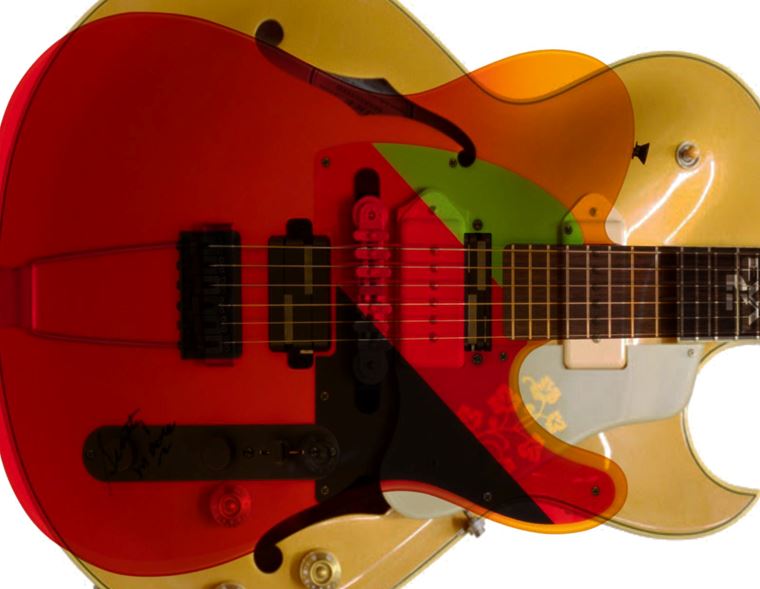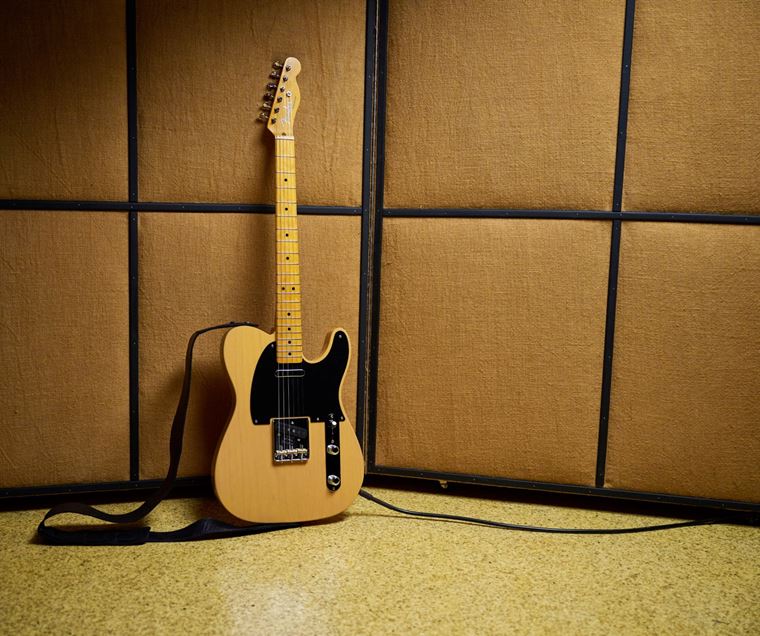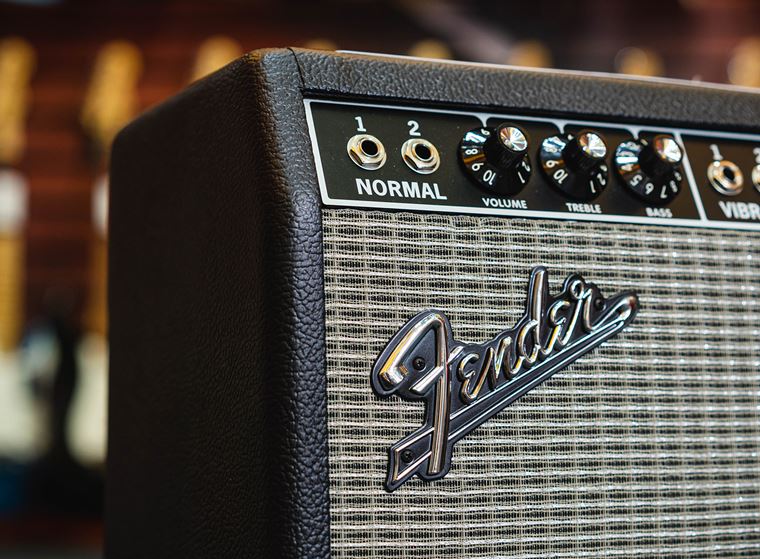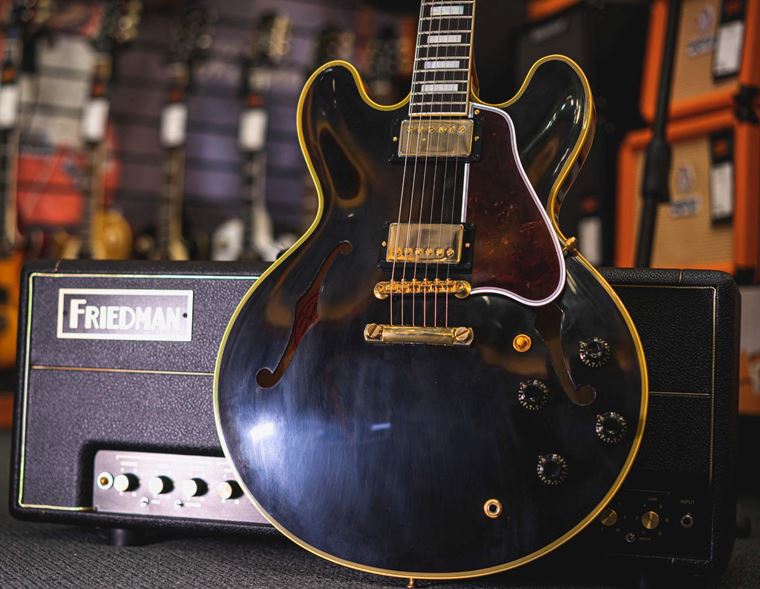Legend of the Blackguard: The Early Story of the Telecaster
Published on 13 May 2024
You all know the guitar I’m talking about today. It’s one of the most famous ever made, and in its earliest iteration, it earned the nickname of ‘Blackguard’.
It’s the Fender Telecaster of course, and whilst I’ve written about it often in the past, I’d like to focus on its early ‘blonde’ years today.
You love the Telecaster. I love the Telecaster. Let's do this!

Contents
Wait…the Fender Broadcaster? Before the Tele
Features of the Blackguard Tele
Before the Telecaster
In the cold, dark days before rock 'n' roll, dinosaurs roamed the earth and there was no such thing as electricity. Well, actually, it was the Jazz age of the 20s and 30s and life was actually pretty colourful. Musically, the world loved big band music and also Hawaiian slide music, both of which were all but completely eradicated by the advent of rock n roll.
And just who was responsible for that? It seems easy to just say ‘Leo Fender’ and ‘the Invention of the mass-market electric guitar’ but that is actually pretty much the case.
Just as Kurt Cobain ended the run of preening hair metallers in the early 90s, so the debut of the Fender Broadcaster put paid to the sound of big band jazz and hula-influenced slide instrumentals.
The arrival of the electric guitar caused such a seismic shift in the universe of music that nothing would ever be the same again...
Wait…the Fender Broadcaster? Before the Tele
Yes indeed, the Telecaster wasn’t always called that, but I’m getting ahead of myself.
The Telecaster/Broadcaster didn’t just appear out of nowhere, even if it seemed that way.
The world before contained plenty of guitars, but they were exclusively acoustic and semi-acoustic hollow bodies. Rudimentary pickups and mics had been developed to help the guitars compete against ever-expanding band sizes, but it was a game of diminishing returns. Gibson and Epiphone were the kings of the scene, competing in New York for the approval of local musos on the Jazz circuit. Hollow body guitars grew and grew until they became quite preposterously unmanageable in size.
The idea of a solid body guitar had been touted around, notably by Rickenbacker (google the ‘frying pan’ for a very early-doors take on a hard-rockin’ electric) and by the highly inventive pop star of the day, Les Paul. His story deserves its own space, but it’s a well known story that his ‘log’ electric guitar was rejected by every major manufacturer in the business. It went on to inspire the Gibson Les Paul Standard, so it’s not as if it was a failure, but Leo Fender certainly wasn’t hanging about either.
Prior to the Tele/Broadcaster, Leo Fender had experimented with solid body guitar design. A famous prototype - nicknamed ‘Snakehead’ due to the shape of the headstock - appeared in 1949 (or 1950, my sources don’t match up), which shows that much of what eventually became the Telecaster as we know it was firmly in place by that point.

Pine Bodies
One thing about the Snakehead prototype that’s interesting is the use of Pine for the body. This trend did actually continue into the birth of the Broadcaster, and has snuck up in certain special builds now and again since. Pine is super-resonant and sounds great but it’s - to put it somewhat bluntly - a right pain in the arse to work with. It’s brittle and difficult to shape without edges breaking off, so it's more of a hassle/labour of love than other equally nice sounding tonewoods. But if somebody else has done the work for you, a pine body is a thing to hold on to for sure.
Brilliantly, many Squier Classic Vibe 50s Teles are built with pine, so if you’ve snapped one of those up, you’ll have bought into a huge amount of authentic Tele history without the attached price!
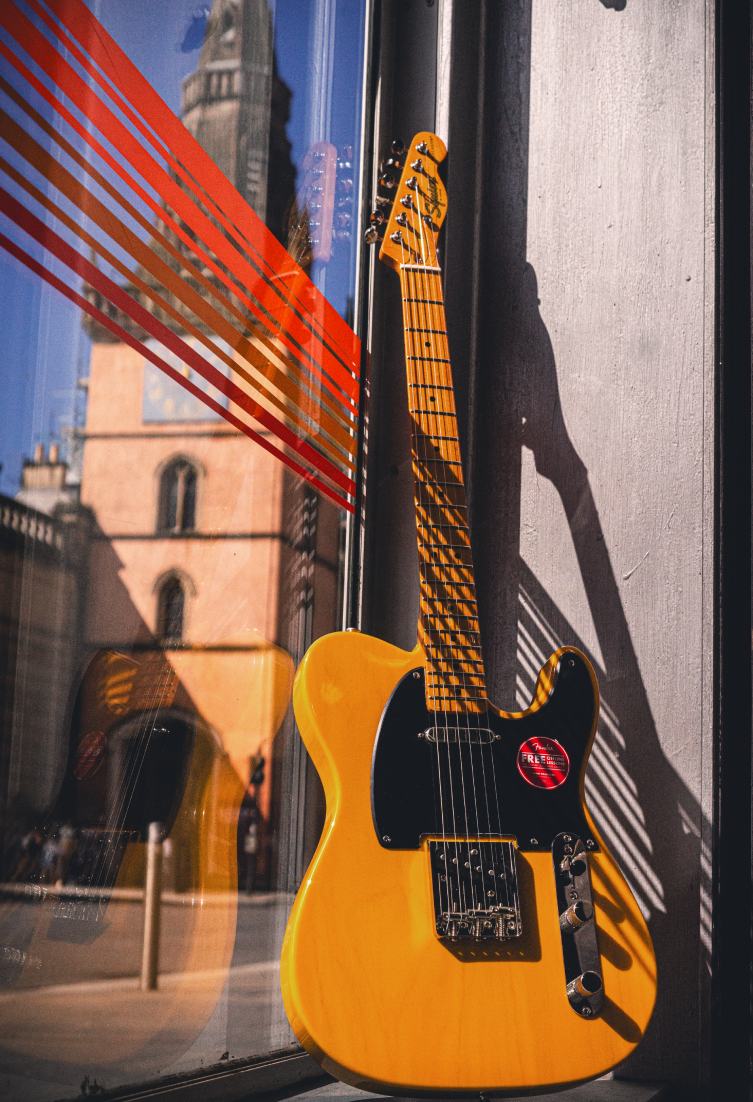
The Esquire
Anyway, back to the story. In the 1930s and 40s, several attempts had been made to bring a solid body electric guitar to the market, but nobody had really succeeded. Guitarists mainly used hollow body guitars with either fitted or after-market pickups, and that was that. Guitarists were always looking for ways to get louder, and after a certain point, their hollow guitars would begin causing feedback. In a pre-Hendrix age, this was not a sound to be embraced, but rather a problem to be fixed.
A solid body would do lots to fix that problem.
Leo Fender’s design priorities lay around the repairability of the instrument, so that replacement parts could easily be used. To that end, he developed a bolted-on neck, something that was unique at the time.
In addition to that, he designed the guitar so that all of the pickups and controls were mounted onto plates that could easily be unscrewed and removed, making repairs and modifications particularly straightforward. The initial idea was that when a part wore out, you’d just replace it: when frets wore out, you’d simply buy a new neck, and so on.
All of these ideas went into a bunch of prototypes, and only one or two remained at the end of the process, one being the Snakehead guitar I mentioned before. This model actually drew inspiration from lap steel guitars, believe it or not, and the simple, utilitarian design sensibilities on display there made it across to the Fender prototype.
We talk about that initial design being a predecessor of the Tele, but in reality it was more like a prototype Esquire: after all, it had only one pickup!
Whatever the case, the second prototype had an ash body and that headstock design we all know and love. The Fender Broadcaster was born.
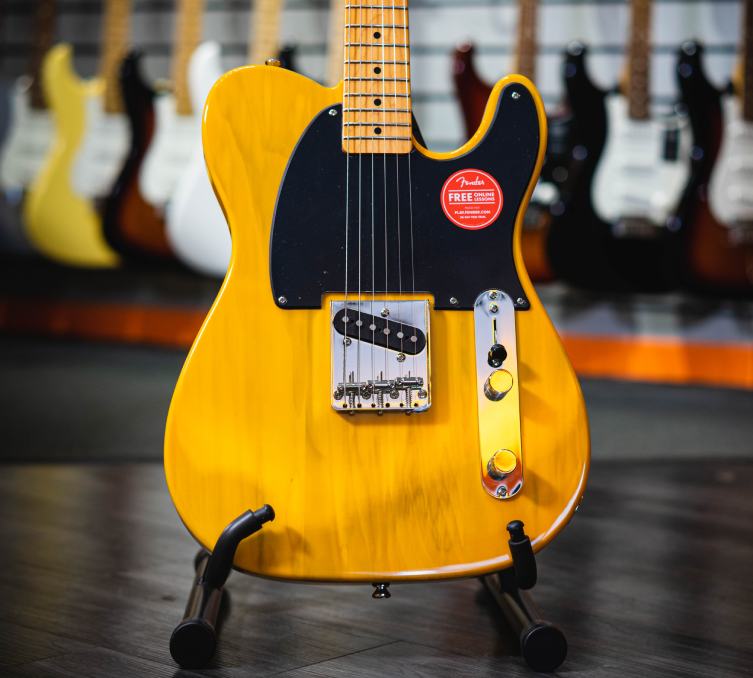
Well, actually, not quite. The Fender Esquire was born, since it came first, technically. This was in 1950, and didn’t actually last too long, for two reasons:
1: Fender’s sales manager complained about it only having one pickup since other guitar brands were offering more, and;
2: The Esquire initially had no truss rod inside the neck and so the necks were bending and warping left, right and centre. Not ideal!
The Broadcaster
A few months later, the Broadcaster arrived, with two pickups and a truss rod. The game-changer was here, and it was available in one colour only: Blonde, with a black bakelite pickguard. The Blackguard!
The music world was ready for this guitar, and it took off like a shot. Already, though, there were issues. Gretsch had a drum kit on the market called the Broadkaster and objected to Fender’s new guitar title. Ironically, Fender nowadays own Gretsch, but that’s by the by. Fender were obliged to can the new name, so the builders at Fender’s Fullerton factory simply snipped off the name ‘Broadcaster’ from the headstock decals, leaving only ‘Fender’.
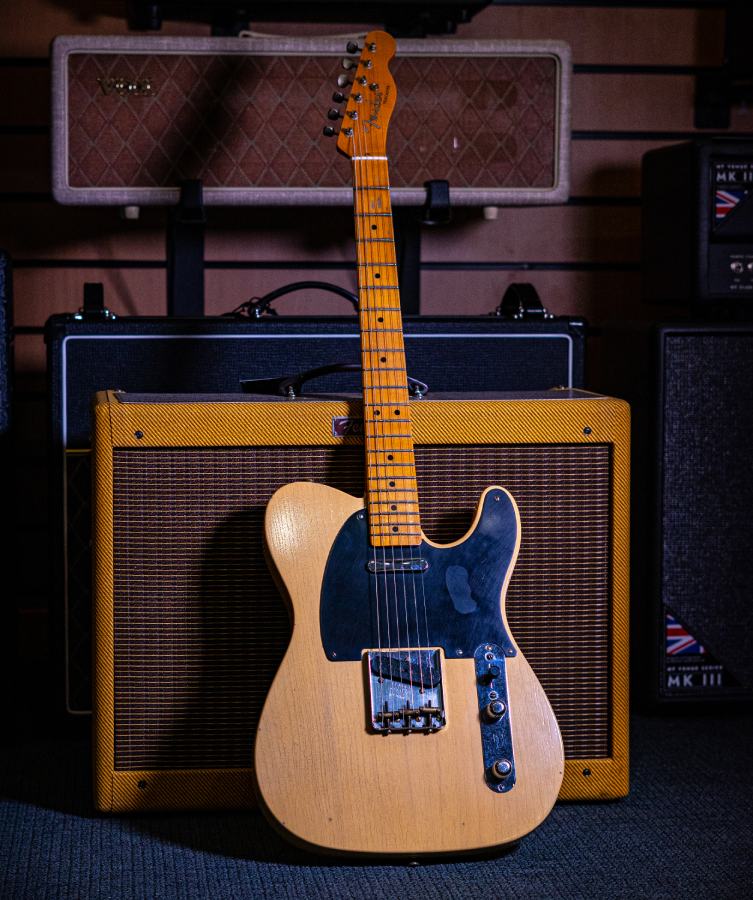
The guitar went out like that throughout 1950 and 1951, and those built during that 9 month period became nicknamed ‘Nocasters’ which are now particularly prized heirlooms. In September 1951, the guitar was finally named ‘Telecaster’ and the legend as we know it took off.
Lots of reissue Teles focus on the year 1952, and that’s simply because that was the first complete year in which the instruments were always named Telecaster.
Features of the Blackguard Tele
So, what makes a Blackguard Telecaster? These are the main features, though do bear in mind that variations are permissible these days, given the amount of reissues available!
- Solid Ash or Pine body
- Bolted on maple neck with a larger profile (‘C’ and ‘U’ shapes are described, but they were all individual to some degree back in the day)
- Black bakelite pickguard
- String-through bridge with three (preferably brass) saddles
- Two pickups: generally single coils, but a neck humbucker still counts!
- Switching varies: original models had idiosyncratic selections (containing a ‘dark circuit’ for the neck pickup which could disable the tone knob), but modern iterations tend to have more standardised circuitry.
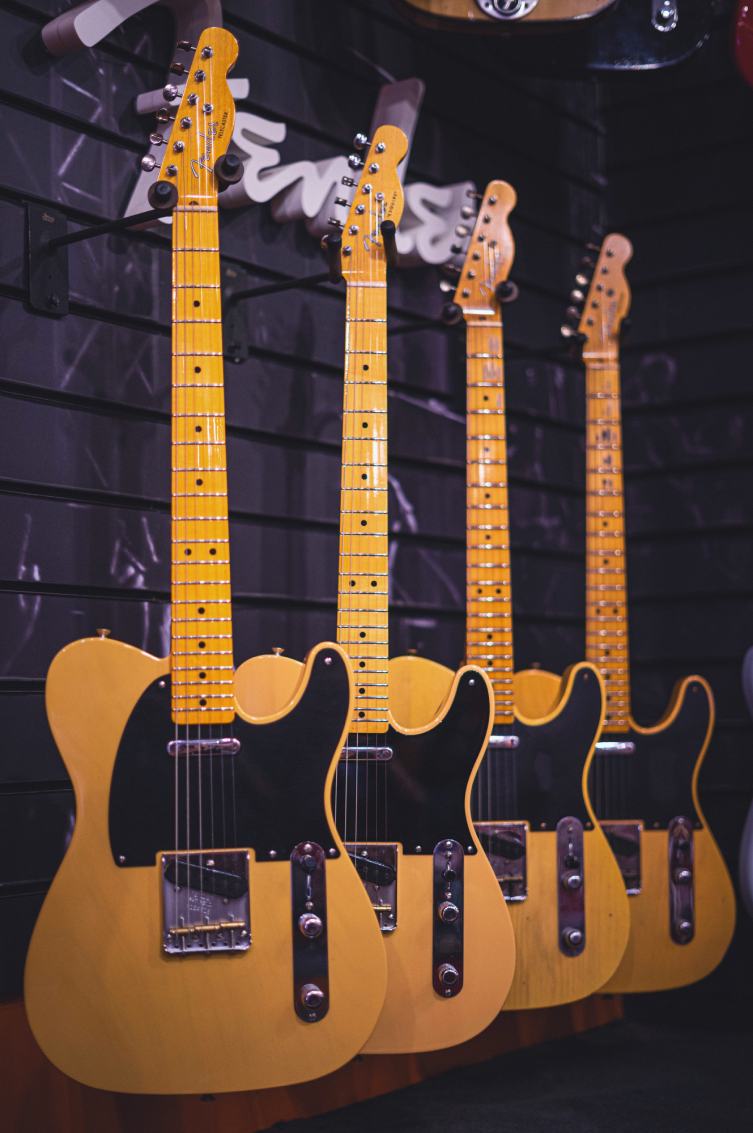
Blackguard Players
There are a vast legion of guitarists out there who find everything they need in a guitar from a blackguard tele. Here’s a small list of the more notable users:
- Bruce Springsteen
- Keith Richards (one of his Blackguards - dubbed ‘Micawber’ - has a neck position humbucker)
- Jeff Buckley (a 1983 reissue with top-loading bridge)
- Danny Gatton
- Roy Buchanan
- Black Francis
- Steve Cropper
- Mike Stern
Blackguard Myths
As with all rare and valuable guitars, there are some fairly colourful myths surrounding the Blackguard Tele. One is that necks made by Tadeo Gomez are somehow more special than other necks. On early Tele examples, the builders would hand sign the underside of the neck heel, and so collectors habitually take the necks off to check for names. Some fans believe Gomez to be responsible for the best neck shapes, and prices have correspondingly risen as a result.

There seems to be a level of dissent here, though, with other Tele addicts who own several Gomez necks reporting that they are all in fact pretty different, so there’s nothing distinct about them in particular.
This type of myth occurs quite a lot: people talk about the early pine bodies as if there’s a secret stash used sparingly instead of a reality that Fender used what it had available at any given time and would routinely order different screws, neck blanks and timbers as the opportunity occured. There was no notion of a vintage market back then, and Fender’s whole ethos was based on easy manufacturing processes, so the many of these myths remain that.
Blackguard Reissues
There only ever was a finite amount of early fifties Telecasters made, so scarcity and reputation have made these instruments amongst the most prized in existence. Thankfully, Fender Custom Shop are able to recreate such famous blackguard guitars as replicas, and there are a whole lot of varieties out there for you!
Given that the basic blueprint is more or less already decided (within those parameters I mentioned earlier), today you can buy your Custom Shop Blackguard Tele in the following:
And there are more! However you prefer your Blondes, there’s one just waiting for you.
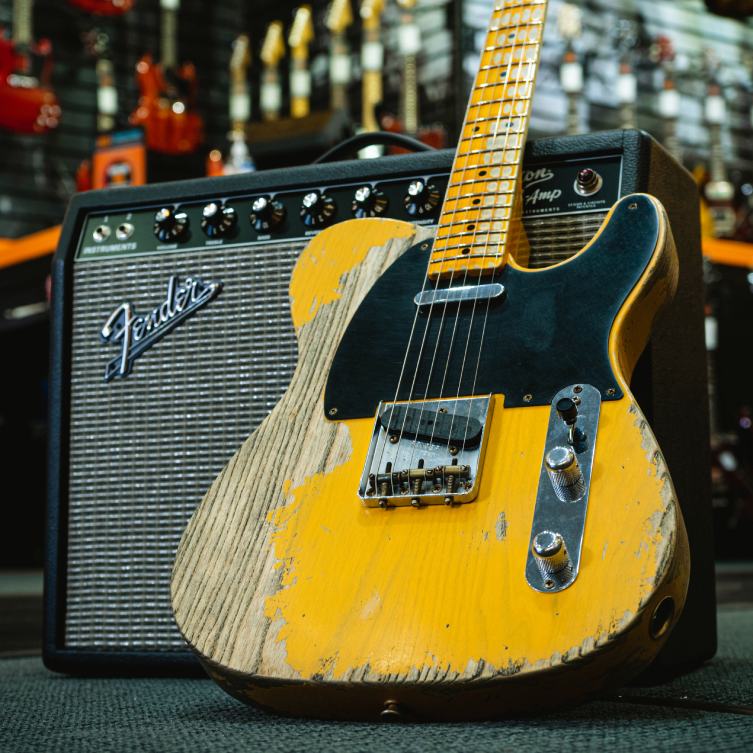
The Original
There aren’t many inventions that not only survive for over 70 years, but survive unchanged, and are not only still sought after but in fact are more popular than ever before. The appeal of the Blackguard Telecaster is a little different for each of us, but there’s no mistaking that definitive look, sound and feel. It’s as classic as it gets, and as ‘now’ as anything can be.
Click to View our Fender Custom Shop Blackguard Telecasters



